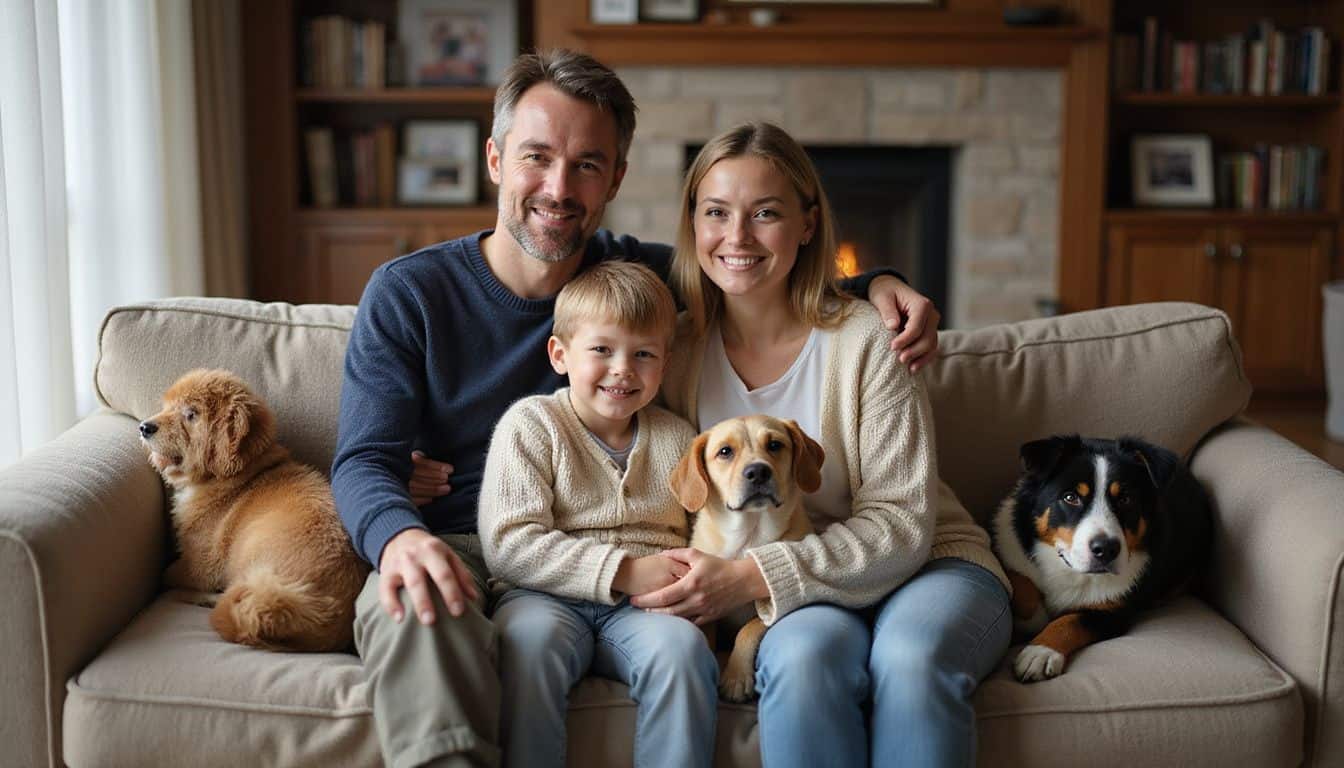Finding the best dogs for first time owners can feel overwhelming with so many breeds to pick from. Studies show that selecting a breed matching your lifestyle makes pet care easier and more rewarding.
This guide will share ten family-friendly dogs that are ideal for new dog parents—with tips on grooming, training, and more. Read on to meet your perfect furry friend!
Key Takeaways
Labrador Retrievers and Golden Retrievers make ideal first dogs—they’re friendly, train easily, and quickly adjust to new homes.
For apartment dwellers, smaller breeds such as Cavalier King Charles Spaniels or Maltese dogs fit well, as they need less space, simpler exercise routines, and adapt comfortably indoors.
Match the dog to your daily habits—factors like grooming demands, activity levels, and dog personality count far more than adorable looks.
Steer clear of energetic breeds like Border Collies or Siberian Huskies for your first dog—they require intense exercise, frequent training sessions, and constant mental stimulation.
Beginner-friendly dogs typically live between 10 and 15 years, needing around 30 minutes of exercise every day to keep fit, happy, and healthy.
Table of Contents
Factors to Consider When Choosing a Dog as a First-Time Owner
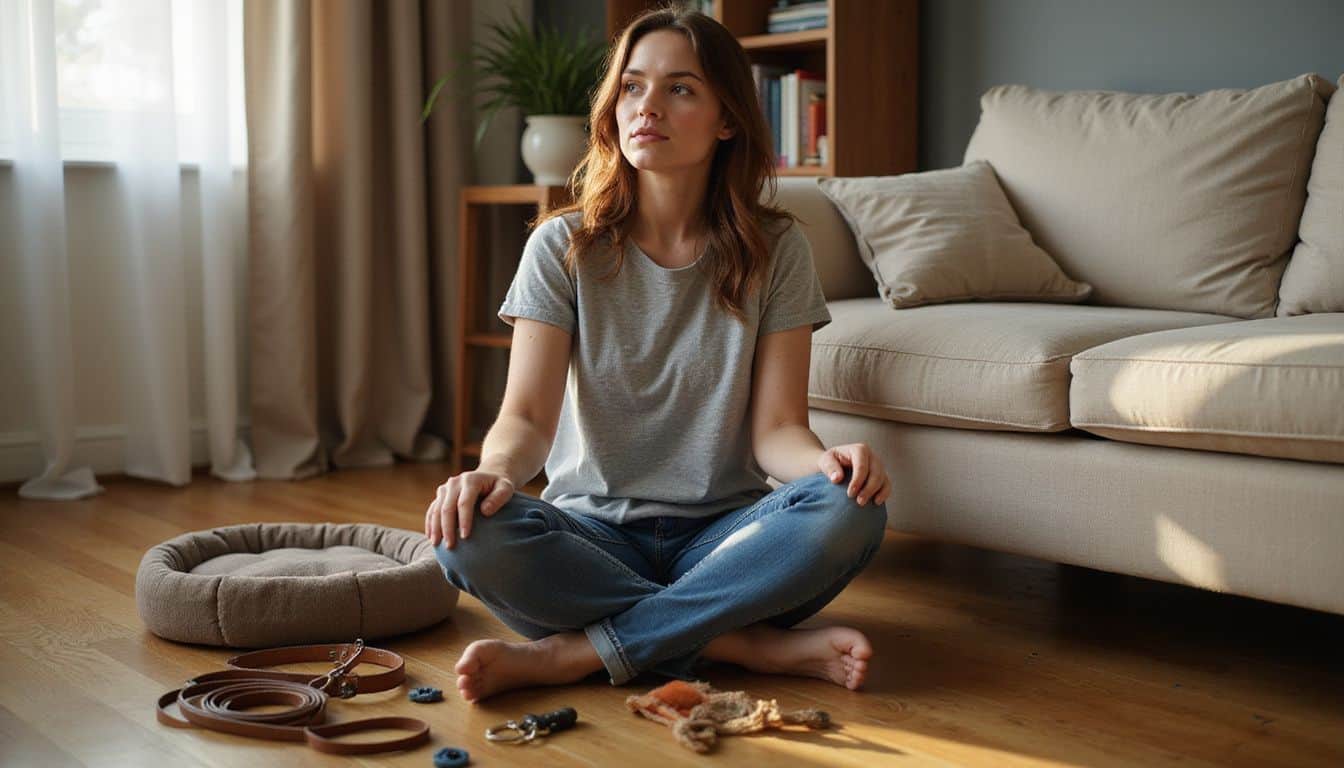
Picking the right dog means looking at more than just cute faces or popular breeds. Your life, home, and daily schedule will shape which furry friend fits best with your first-time owner status.
Size of the Dog
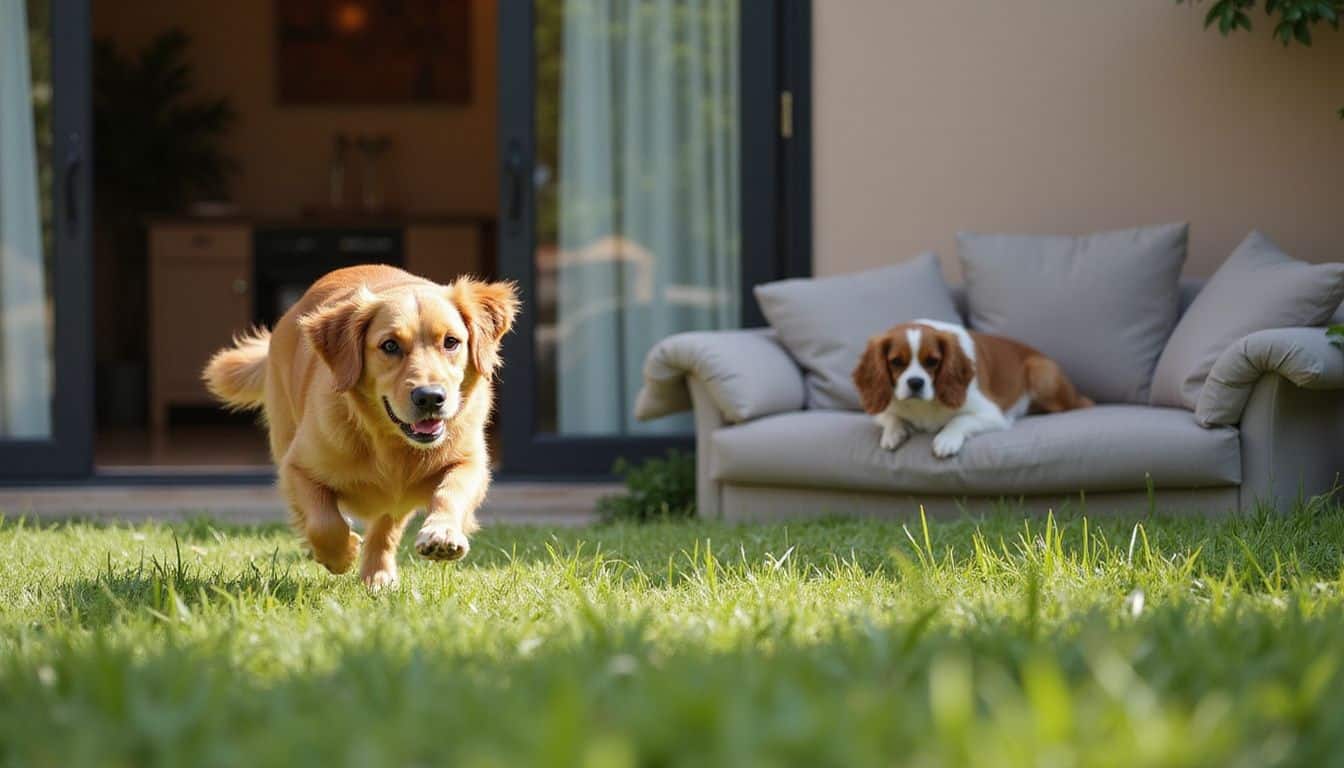
Your dog’s size has a bigger effect than most people realize. Compact breeds, like the Cavalier King Charles Spaniel, fit comfortably in apartments and don’t need vast spaces to roam.
My neighbor’s Cavalier happily curls up on the couch, content with only a small yard to run around in. Bigger dogs need extra room to move freely and daily exercise to feel satisfied.
They often involve more grooming, too—which can add extra chores if you’re new to dog parenting.
The right-sized dog for your home creates harmony for both you and your fur baby.
Your home’s size affects almost every aspect of raising a dog—from the dog food budget to daily activity. Larger breeds, such as the Bernese Mountain Dog or Golden Retriever, must have room to stretch and play comfortably.
Smaller dogs, like the Maltese or Shih Tzu, fit well into small homes and adapt easily to indoor living. Your living space should influence whether you go for a cuddly lapdog or a bigger companion.
Pet size directly impacts training ease and daily care tasks.
Grooming Needs
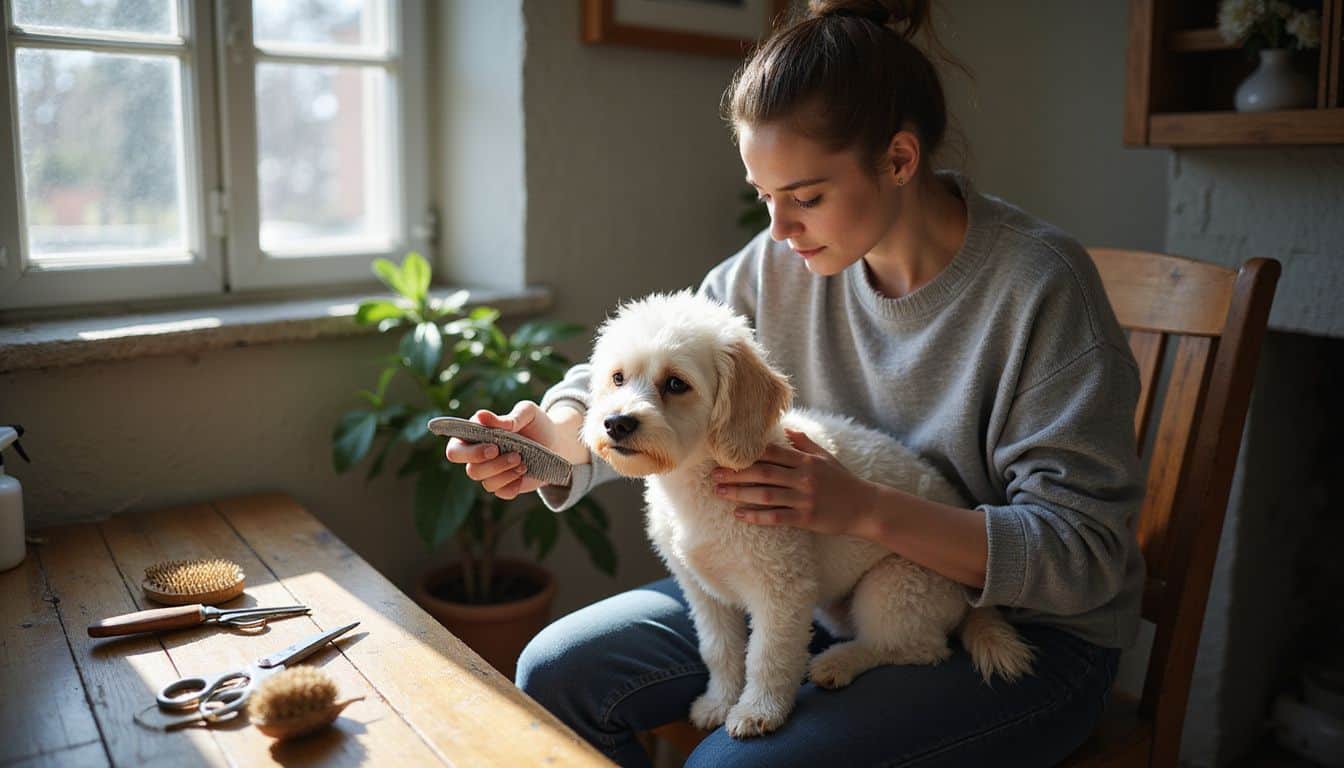
Grooming requirements differ a lot between dog breeds—that’s very important if you have a busy schedule. Short-haired types like Beagles or French Bulldogs need little brushing or bathing, ideal for women on the go.
Fluffy breeds, though, such as Poodles, Bichon Frises, and Shih Tzus, need frequent brushing to avoid knots or tangles. Some breeds need professional grooming every 4 to 6 weeks, a detail new pet owners often overlook.
Professional grooming visits mean extra costs for pet care. For allergy-conscious owners, low-shedding breeds like Poodles and Bichon Frises produce minimal hair or dander.
Double-coated dogs require extra care during heavy shedding seasons—they shed their thick undercoat heavily twice a year. Labrador Retrievers and Golden Retrievers shed continuously but especially heavily in spring and fall.
Breeds such as the Soft Coated Wheaten Terrier have coats that keep growing and need regular trims. Basic grooming supplies include slicker brushes, nail clippers, and shampoos safe for dogs.
The American Kennel Club suggests introducing grooming routines early, while your pup is still young, to create good habits easily. Next, let’s check out breed activity levels to help pick the ideal dog for you.
Activity Level
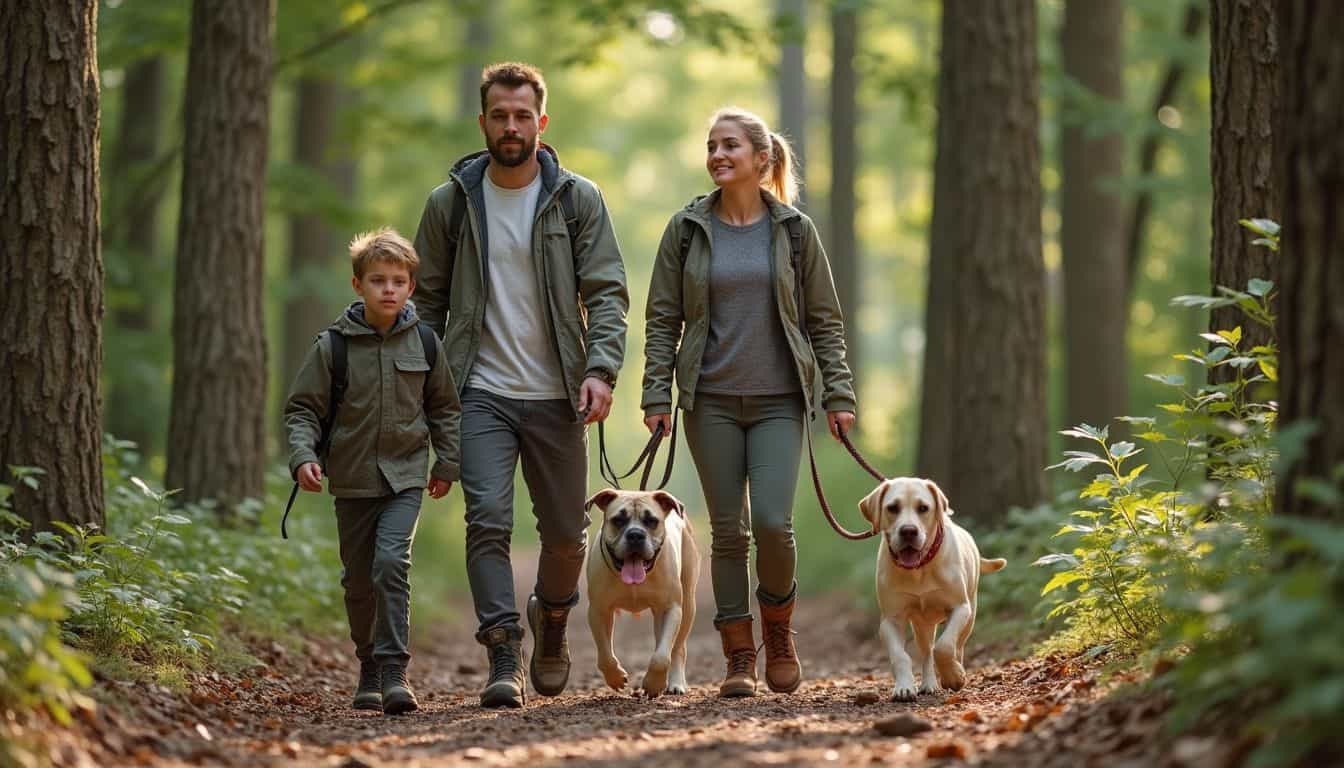
Dogs need regular exercise each day to stay cheerful and healthy. Matching a dog’s energy level with your own lifestyle is key to a happy relationship. High-energy breeds—think Border Collies—thrive on multiple daily walks and active playtime sessions.
Without proper physical activity, these dogs easily get bored and might even become destructive. On the other hand, low-energy breeds, like Greyhounds, prefer brief strolls followed by plenty of relaxing on the couch.
For women who prefer a quieter lifestyle, these mellow dogs make excellent companions.
Your family’s daily routines and activities play an essential role in choosing the perfect dog. Active households that enjoy running, hiking, or long outdoor trips do best choosing energetic breeds, including Boxers or Labrador Retrievers.
Busy women with demanding work schedules may find calmer breeds, such as Cavalier King Charles Spaniels or Maltese, a far better match. These breeds require less physical activity and adjust comfortably to living in smaller spaces, like apartments.
Most dogs generally benefit from a minimum of 30 minutes of walking every day, along with short training sessions to keep their minds alert and engaged.
Temperament
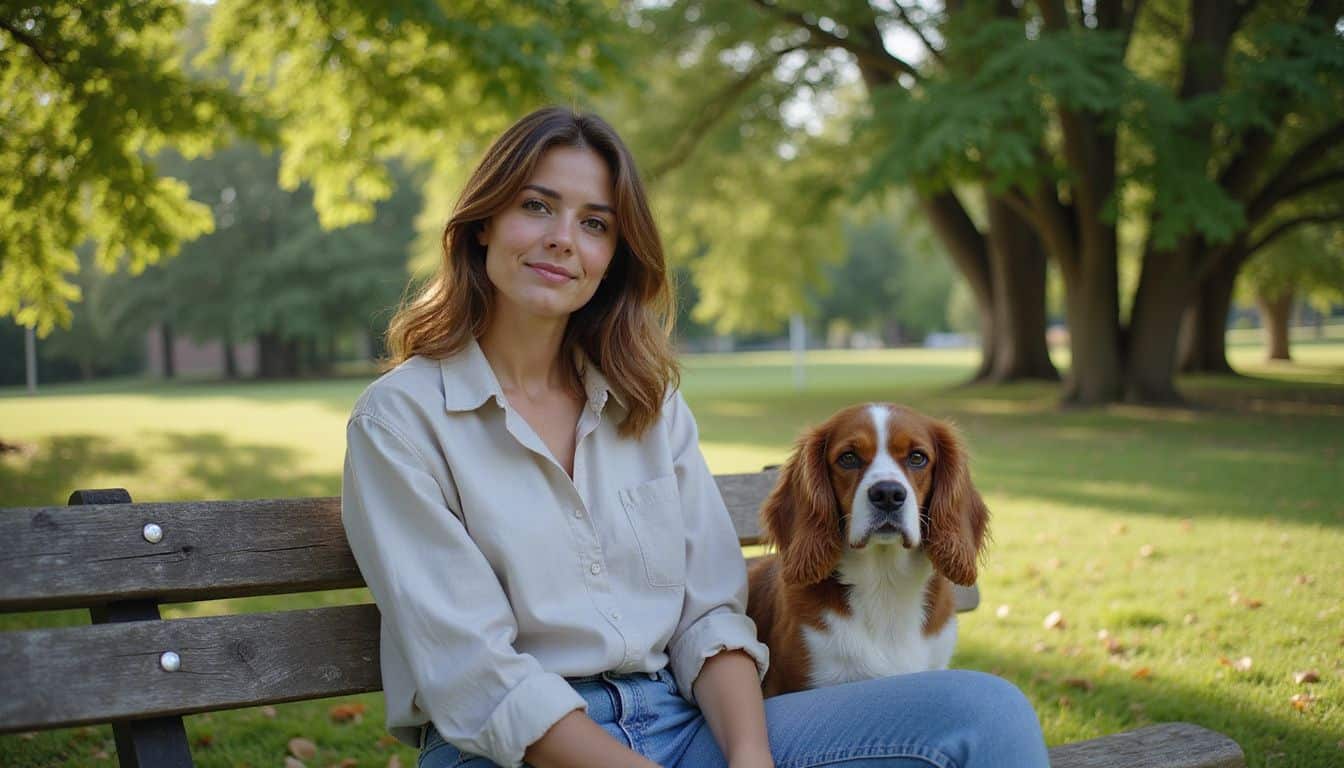
A dog’s temperament is the most important factor for new owners to consider. Friendly, patient, and calm-natured breeds make the learning process easier and less stressful. Labs and Golden Retrievers are perfect examples—they’re friendly and eager to please their humans.
Many popular family dogs have calm personalities, making them ideal for beginners. My own Cavalier King Charles Spaniel was calm and patient from the very start, easing my early days as a new dog owner.
Sociable pups who enjoy being around people will form bonds quickly, easily forgiving beginner slip-ups.
The right dog doesn’t just fit your home – it fits your heart and learning style.
Great beginner breeds
clearly signal their needs through body language. Papillons and Bichon Frises, for example, have expressive movements that make it easy to read their moods. Steer clear of breeds known for stubbornness, like the Siberian Husky, or those requiring intense activity and focus, like Border Collies.
Breeds that easily follow basic commands make your training sessions simpler. Poodles—whether standard, toy, or miniature—bring intelligence and relaxed temperaments ideal for first-time dog owners.
Best Dog Breeds for First-Time Owners

We’ve rounded up the 10 best dog breeds for first-time pet parents in 2025—friendly pups with easygoing personalities and simple care routines. Take a peek below to find the perfect furry friend for your lifestyle:
- Labrador Retriever: Super friendly, dependable, and loves family time. Regular exercise keeps them happy.
- Cavalier King Charles Spaniel: Sweet-tempered, gentle, and thrives in small living spaces. Just needs daily walks and cuddles.
- French Bulldog: Playful and laid-back, great for city life. Requires minimal grooming, but watch out in hot weather.
- Golden Retriever: Naturally calm, eager to please, and fantastic with kids. Regular brushing and daily exercise make for a happy pup.
- Shih Tzu: Cheerful, lovable, and adaptable—even in apartments. Grooming every few days keeps coats shiny and clean.
- Greyhound: Surprisingly calm, low-energy indoors, yet enjoys daily walks. Simple grooming routine with short coats.
- Beagle: Curious and friendly, easygoing with families and other pets. Needs regular playtime and sniffing adventures.
- Pug: Loyal companion, affectionate, and comfortable in small spaces. Watch their diet and keep activity moderate.
- Boxer: Energetic and goofy personality, affectionate toward kids and adults alike. Daily exercise channel their playful energy positively.
- Boston Terrier: Intelligent, lively, and fits well in apartments or houses. Basic exercise and easy-to-care short coats.
Labrador Retriever
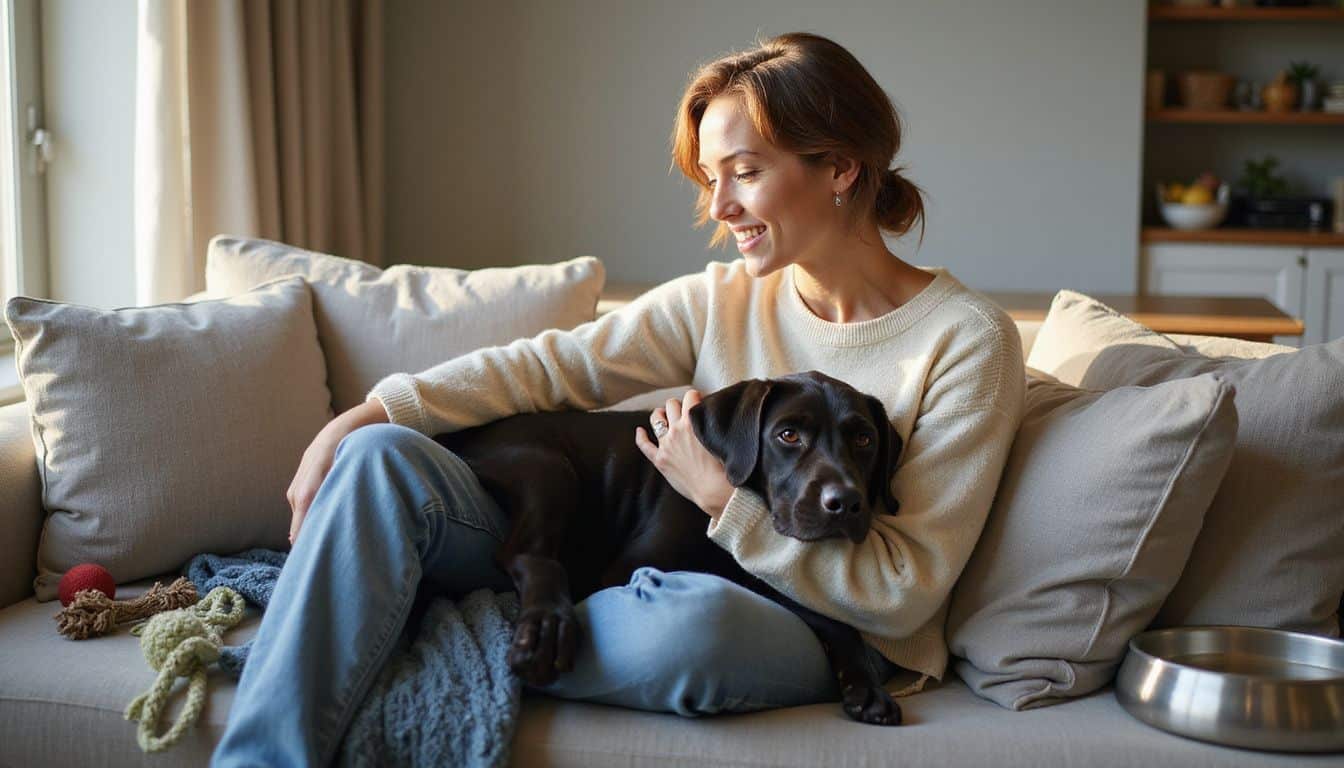
Labrador Retrievers are ideal pets for busy women wanting a loyal companion. These friendly, gentle dogs grow between 21.5 and 24.5 inches tall and weigh around 55 to 80 pounds. With proper care, Labs usually live about 10 to 12 years.
Their coats come in three popular colors—black, chocolate, and yellow—and require little grooming compared to larger dogs. The short hair sheds a bit, but regular brushing once a week easily keeps them tidy and comfortable.
Labs adore water, and will happily leap into lakes, swimming pools, or even muddy puddles if given half a chance.
Labs get along wonderfully with children, thanks to their patient and caring personalities. They have plenty of energy for daily walks, yet they’re just as happy lounging at home with you on the sofa.
Because they’re gentle and friendly, Labs often turn up in shelters and rescues, letting you easily choose adoption instead of buying from breeders. Training Labrador puppies is usually straightforward, since they naturally want to make their owners happy.
Still, young Labs occasionally push limits, especially during their adolescent stage—but staying consistent and firm quickly keeps them on track. With consistent training, these smart, sweet-tempered dogs happily adjust into nearly any household.
Golden Retriever
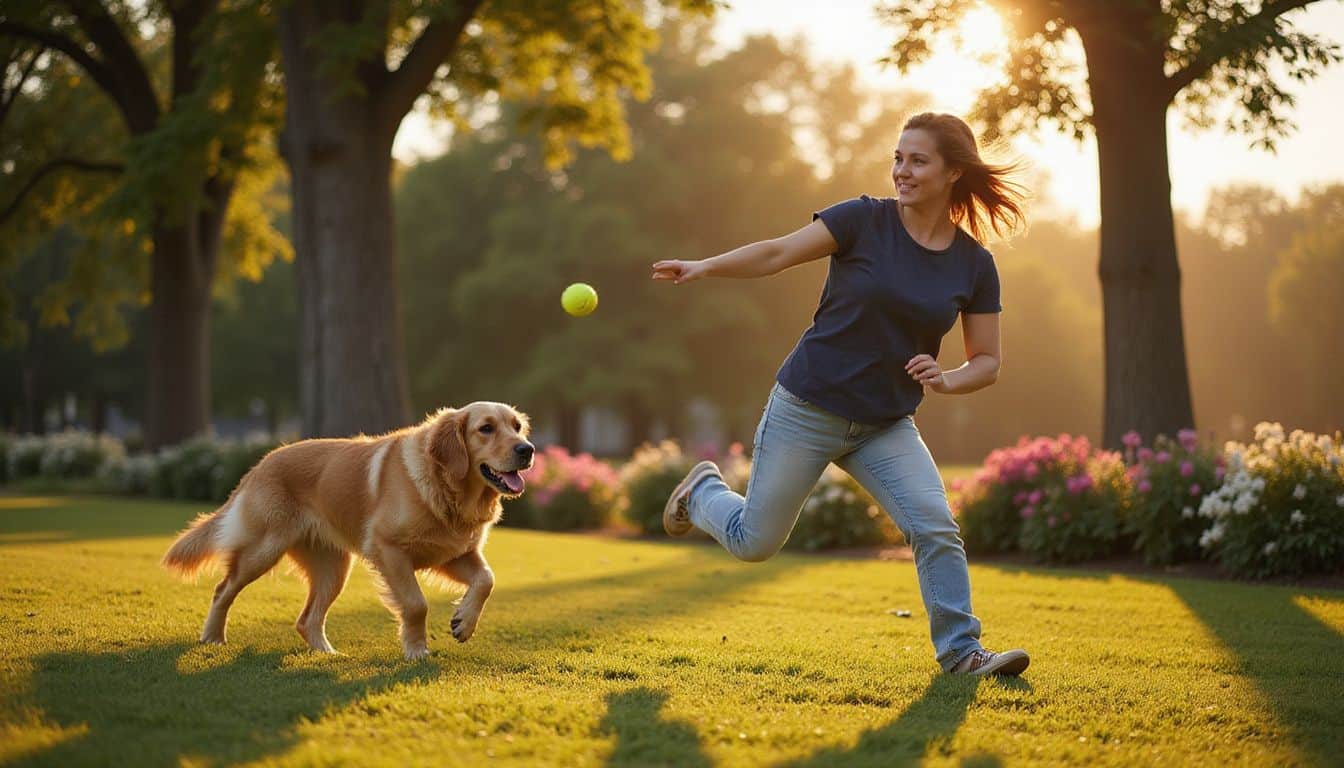
Golden Retrievers are a popular choice for first-time dog owners—and it’s easy to see why. These lovable dogs grow about 21.5 to 24 inches tall, weigh between 55 and 75 pounds, and usually live around 10 to 12 years.
Their stunning coats range in shades from soft, pale gold to richly colored golden tones, requiring regular brushing to look their best. Families appreciate how gentle and patient Golden Retrievers are with children, easily fitting into all sorts of household routines and lifestyles.
A Golden Retriever doesn’t just become your pet—it becomes your heart’s guardian.
Training these cheerful dogs in basic obedience is usually a breeze, thanks to their friendly, eager-to-learn attitude. They need daily playtime and plenty of walk breaks, helping them burn energy and stay in shape.
Unlike some breeds known for stubborn personalities, Golden Retrievers enjoy learning new tricks and quickly pick up cues. Shelters or local rescues often have these sweet pups available, giving you the chance to bring home a devoted companion while giving an animal in need a second chance.
And yes, their thick double coats do shed steadily all year round—so having a vacuum nearby is always smart!
Cavalier King Charles Spaniel
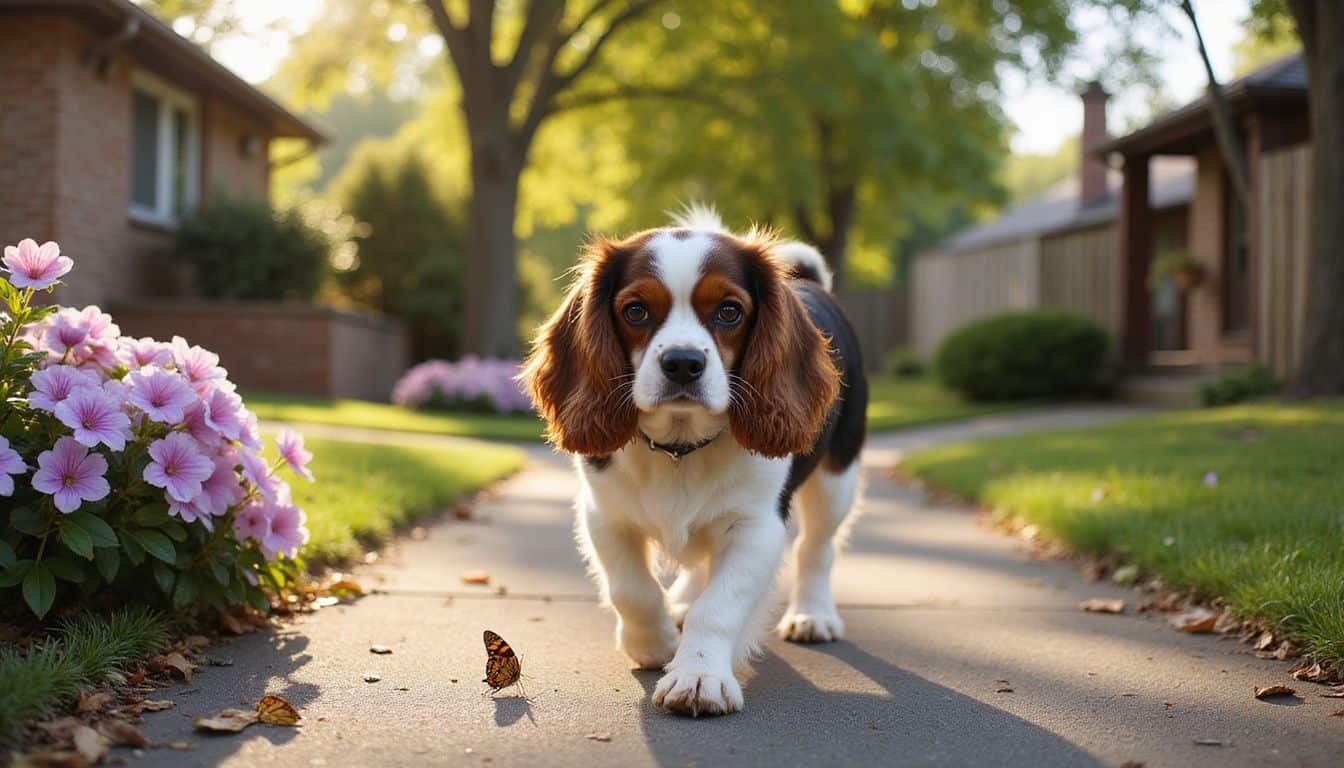
Cavalier King Charles Spaniels are ideal first pets for women with busy lifestyles. These friendly pups stand about 12 to 13 inches tall and weigh between 13 and 18 pounds. Their compact size makes them great for small apartments or homes with limited yard space.
With a gentle and loving personality, Cavaliers bond quickly with their owners. Plus, they have moderate energy. A daily walk can keep these dogs happy without needing endless hours of activity.
Their silky coats draw plenty of attention during strolls around the neighborhood. You’ll find Cavaliers in stunning colors—from tricolor patterns to rich ruby or even a sleek black-and-tan combination.
Regular brushing will easily control shedding and prevent tangles.
Training is a breeze with Cavaliers. They have smart, eager-to-please personalities and quickly pick up commands. Shelters and pet adoption centers often include Cavaliers among available breeds, offering you a chance to give a deserving pup a second home.
With lifespans around 12 to 14 years, these dogs become your loyal companions and close friends for many years ahead.
Bichon Frise
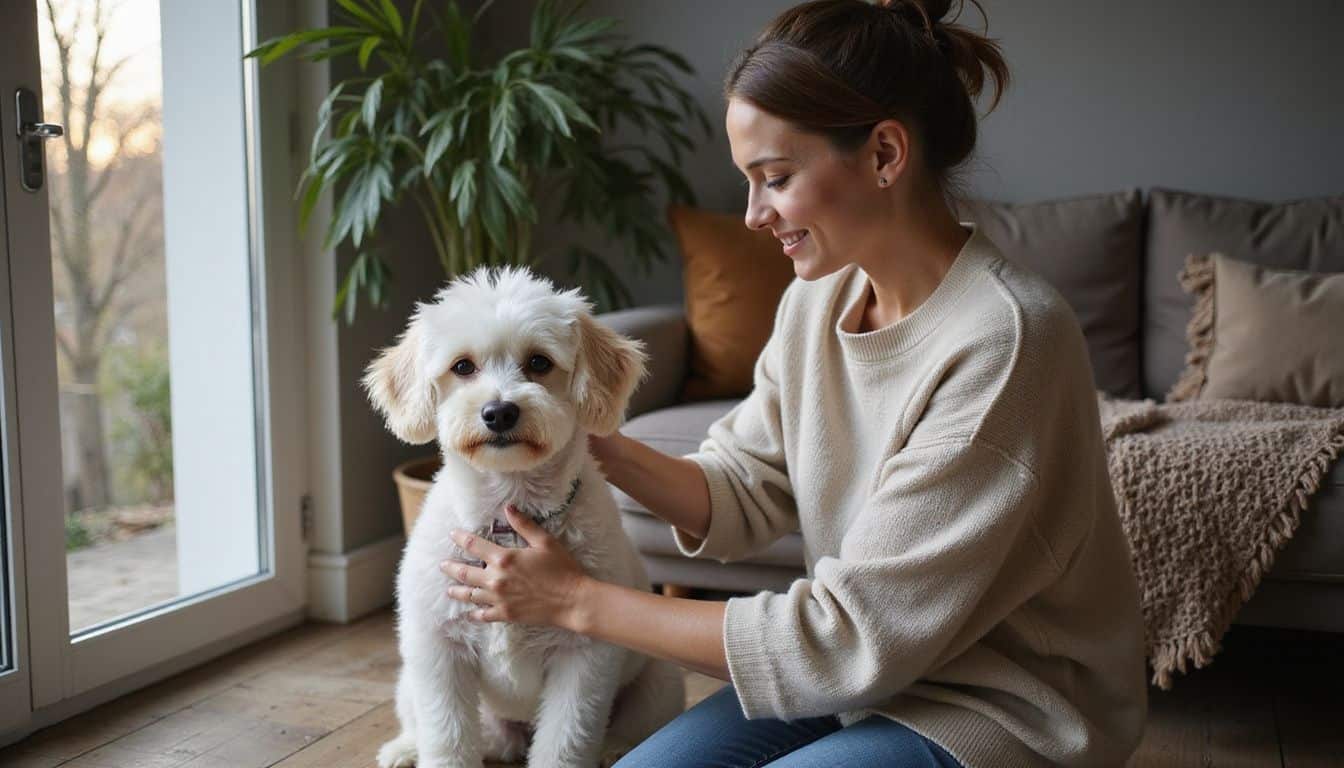
Bichon Frises are ideal pets for busy women who want an easygoing companion. These playful dogs stand only around 9-12 inches tall and weigh about 7-12 pounds, perfect for apartment living.
Their upbeat and flexible nature helps them fit comfortably into almost any routine. Their fluffy white coats often feature touches of apricot, buff, or cream—each Bichon displays its own special appearance.
To keep their coats soft and tangle-free, they do need regular brushing and grooming.
Most Bichons live about 14-15 years, so they’ll happily stay by your side for many years. They enjoy moderate daily exercise, like short walks or a quick game of fetch. Families especially adore how gentle these pets behave around kids and other animals.
Despite their little bodies, Bichons have lively, cheerful personalities—they’ll quickly charm your heart. These intelligent dogs pick up commands easily, though some guidance with excessive barking might be necessary.
Shih Tzu
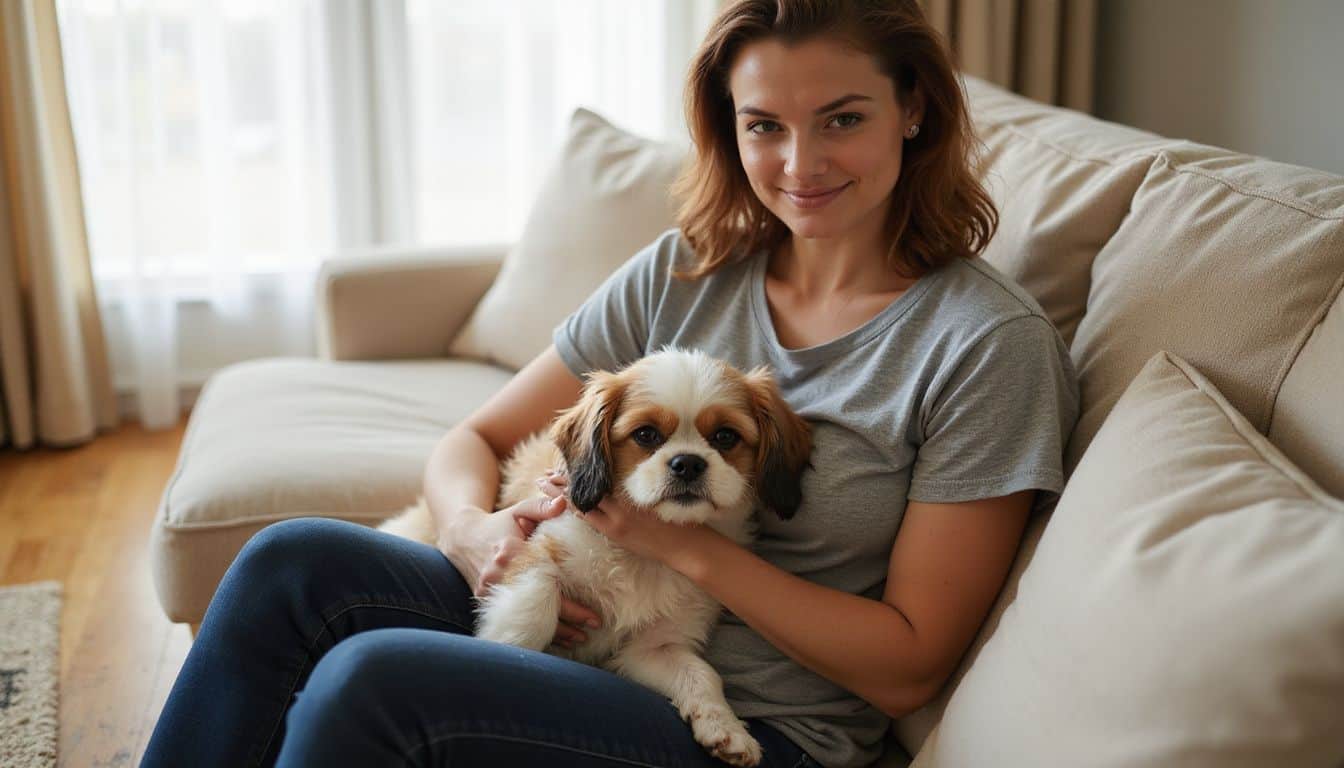
A Shih Tzu makes an excellent choice for busy women getting their first dog. These little pups stand only 9 to 10.5 inches tall and weigh around 9 to 16 pounds—perfect for apartments or smaller homes.
With sweet faces and flowing coats in various colors, they carry themselves with an almost royal charm. Plus, these dogs typically live from 10 to 18 years—you’ll have a loyal companion with you for a long while.
I adopted my own Shih Tzu, Bella, five years ago, and she’s content with short daily walks. She would rather curl up on the couch than chase around outdoors. Grooming, though, takes a bit more effort—you’ll need to brush their double coat several times a week to prevent tangles or mats.
Many Shih Tzu owners prefer a shorter “puppy cut”, which keeps grooming simple and quick. Shih Tzus form strong bonds with their owners and usually get along easily with other pets.
If a low-energy, cuddly companion appeals to you, a Shih Tzu could be an ideal fit.
Maltese
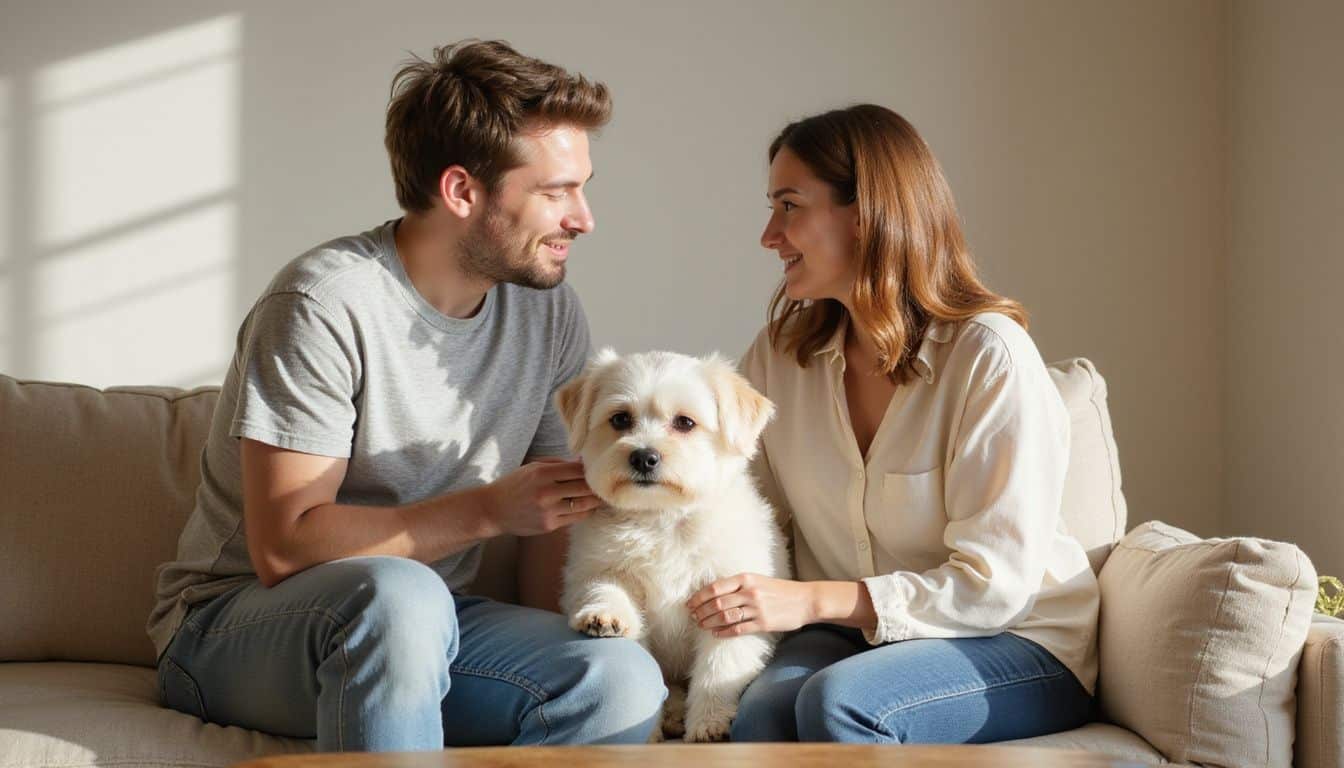
Maltese dogs make wonderful pets for new dog owners. These little puppies grow to about 7-9 inches tall and weigh less than 7 pounds—perfect for apartment living. Their beautiful, white, silky coat needs brushing every day, but they hardly shed at all.
Maltese dogs usually live between 12 to 15 years, giving you many happy years with these loving companions. They need moderate daily exercise, so a couple short walks a day keep them healthy and content.
The Maltese may be small in size, but they’re giants in personality and love.
Closely related to toy poodles, Maltese dogs enjoy being around people and fit nicely into different lifestyles. Their small build comes with a lively, outgoing personality! They usually get along fine with other animals and kids, as long as children handle them carefully.
Most Maltese owners visit a professional groomer every few weeks to keep their dogs looking neat and tidy. These clever pups pick up training quickly, but like other small dogs, housebreaking might require extra effort and gentle persistence.
Poodle (Standard, Miniature, or Toy)

Poodles are lovable dogs available in three convenient sizes, perfect for different lifestyles and homes. Standard Poodles measure over 15 inches in height and weigh around 45 to 70 pounds.
Slightly smaller, Miniature Poodles range from 10 to 15 inches and weigh about 15 to 18 pounds. The smallest size, Toy Poodles, remain under 10 inches tall and weigh only 5 to 9 pounds.
These lively, curly-coated companions typically live between 10 and 18 years, and their fur comes in many solid shades. Grooming every few weeks will keep their coats healthy, clean, and looking appealing.
Known for intelligence and easy training, Poodles quickly pick up new commands and truly enjoy pleasing their owners. Their energetic and playful personality matches especially well with active women, who prefer daily walks or regular outdoor exercise.
Another great benefit about Poodles—they hardly shed at all, which makes them ideal dogs for people dealing with mild allergies. Standard Poodles have a friendly, gentle nature much like Labradors—but they show it off with extra flair and far less shedding.
Greyhound
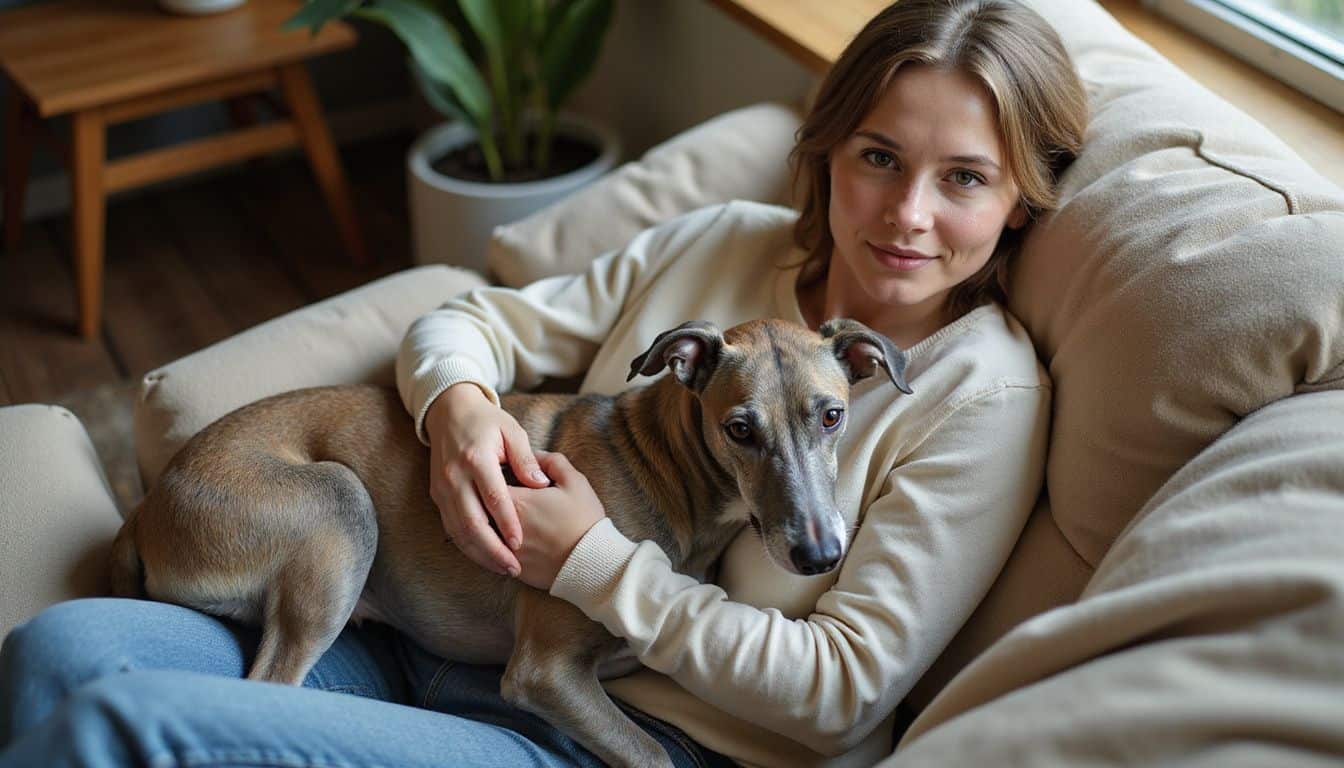
Greyhounds are wonderful pets, especially for women with busy lifestyles. These gentle dogs are tall—usually 27 to 30 inches—and weigh about 60 to 70 pounds. But don’t worry, their size doesn’t mean they’re high maintenance! In fact, greyhounds need much less exercise compared to other large breeds.
Known fondly as “40-mph couch potatoes“, they enjoy quick sprints and then happily lounge at home, relaxing for hours on end. Thanks to their calm personality and loyal spirit, they’re also great for apartment living despite their tall frames.
On average, greyhounds live between 10 and 14 years. Their thin coat means grooming is easy—a quick brushing every now and then usually does the trick. Many adopted greyhounds previously raced professionally, and they smoothly adjust into quiet family homes.
With their sweet, easygoing nature and calm attitude, they’re an excellent fit for first-time dog owners. Keep in mind, though, these dogs do feel the cold easily due to their short fur.
A warm sweater or coat during chilly days goes a long way. Greyhounds are smart, too, so training is straightforward and simple—think basic obedience, gentle encouragement, and lots of positive reinforcement.
Boxer
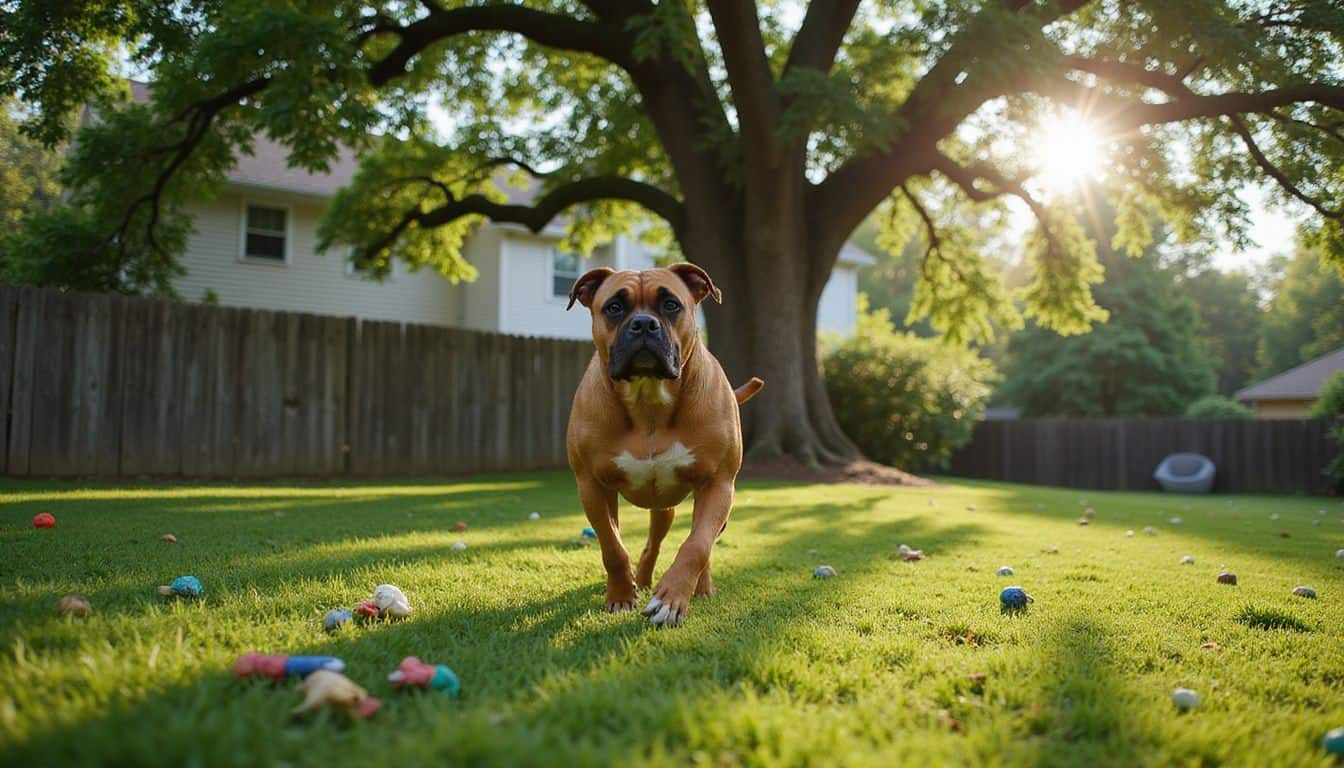
Boxers are fantastic pets, especially for women who prefer a lively yet loyal buddy. These sturdy dogs stand about 21 to 25 inches tall and weigh from 55 to 70 pounds. They typically live for around 10 to 12 years, giving plenty of time for adventures together.
With short coats in colors like brindle or fawn, grooming them is a breeze—just occasional brushing does the trick. They offer an ideal blend of fun-loving energy and calm companionship.
Boxers enjoy running and playing outdoors, followed by relaxed evenings snuggled on the couch.
Starting training early with Boxer puppies guides them toward good habits as adults. Since they’re larger dogs, clear yet gentle lessons help them understand boundaries. If raised around children and pets, Boxers usually get along just fine.
Daily walks and plenty of active playtime keep them healthy and content. Keeping your Boxer physically active helps to avoid boredom and bad habits—a worn-out Boxer means a happier, calmer pet.
Protective by nature, Boxers watch over their family carefully but rarely show aggression.
Papillon
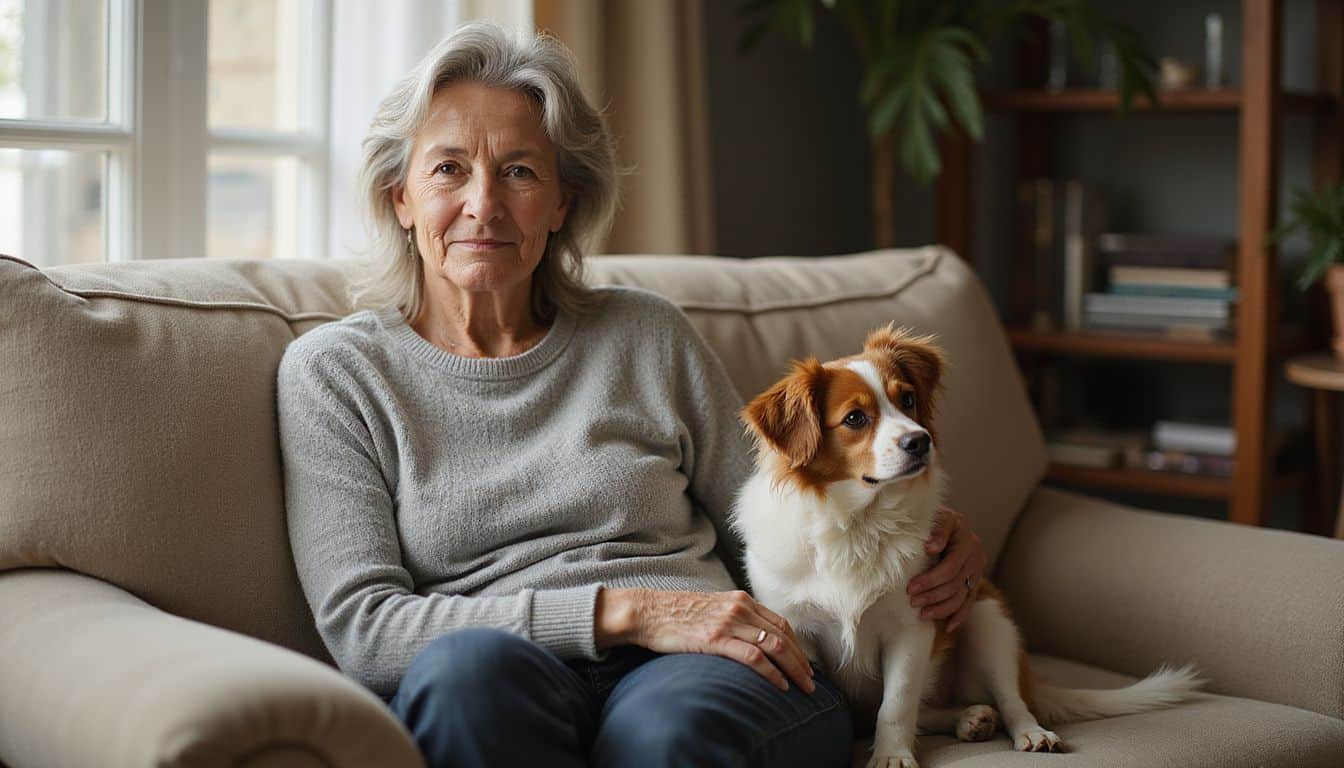
Papillons make wonderful pets, especially for first-time dog owners. These small pups weigh just between 5 to 10 pounds and usually grow to about 8 to 11 inches tall—perfect for apartment life.
Their name comes from the French word for butterfly, thanks to those distinct butterfly-shaped ears. Small as they are, Papillons have lively personalities filled with charm that brightens your day.
And with an average lifespan of 14 to 16 years, there is plenty of quality time to spend together.
These dogs have a lovely single-layer coat colored white, with patches of red, sable, black, or lemon. Grooming needs for Papillons are moderate, and daily brushing keeps their coats neat and tidy.
Plus, moderate exercise works well for them, which is ideal for busy schedules. Papillons adapt quickly and have a friendly temperament that makes day-to-day life simple. Training goes smoothly, since they’re quick learners who respond well to basic commands.
Unlike smaller breeds such as Yorkies or Chihuahuas, Papillons are rarely aggressive. They’re playful enough outdoors yet calm indoors, easily fitting into many lifestyles.
Breeds to Avoid for First-Time Owners
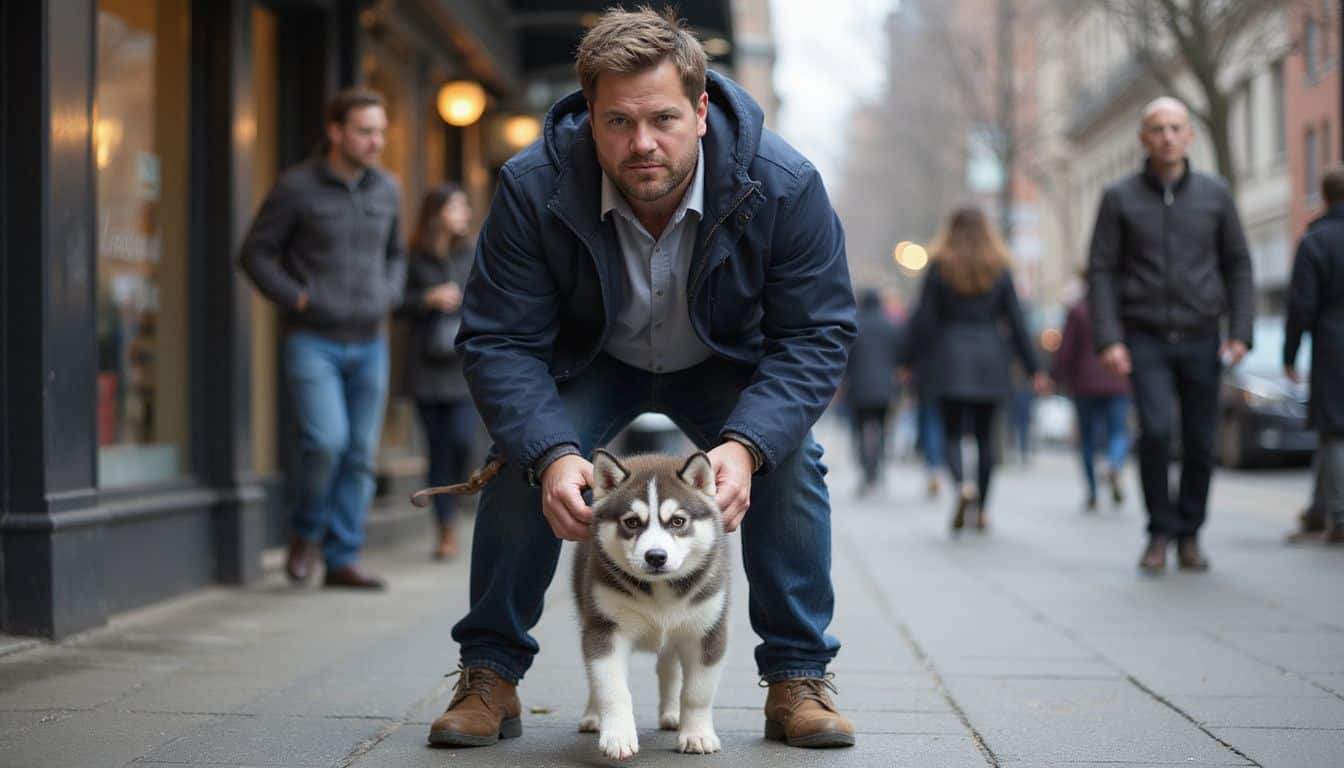
Some dog breeds need more work than others for new owners. Skip these tough breeds if you’re just starting out with dogs.
Siberian Husky
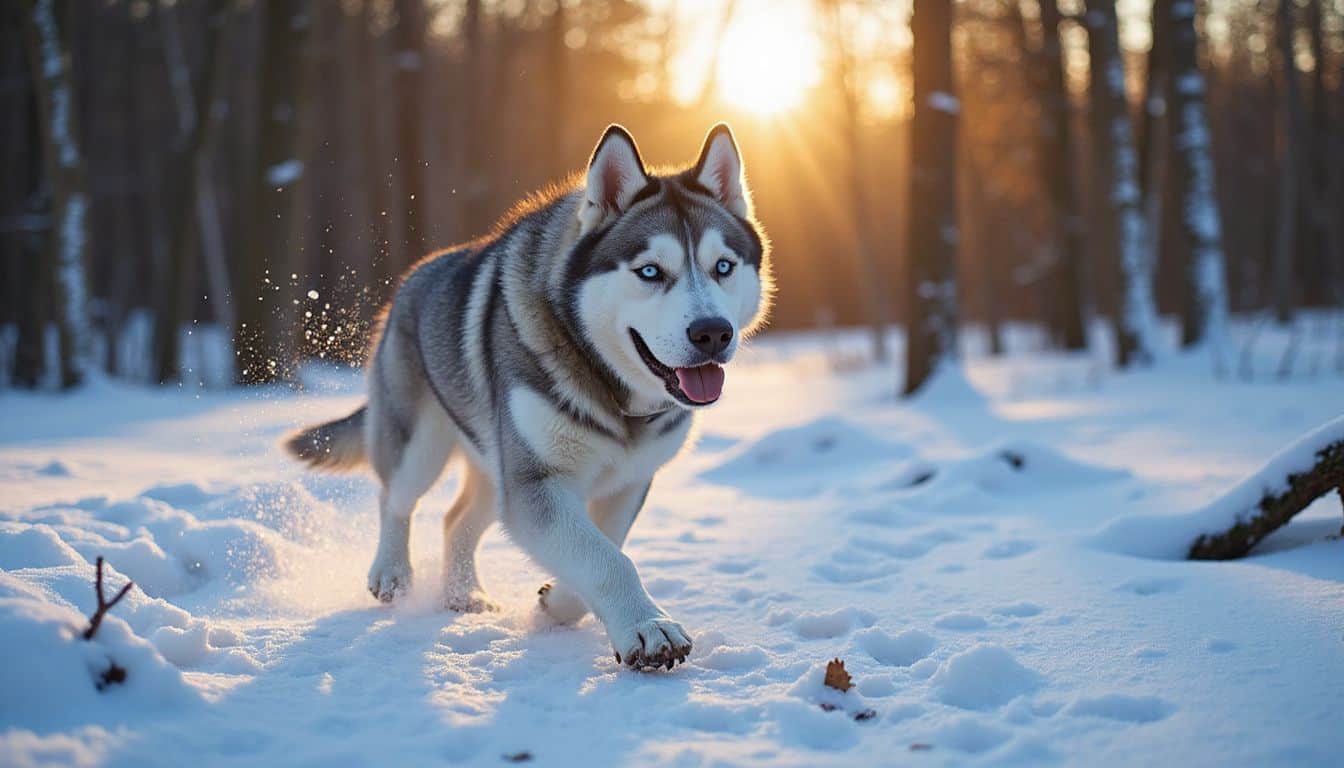
Siberian Huskies need plenty of exercise and regular grooming to stay healthy and happy. These striking dogs have thick, double-layered coats that shed heavily—be prepared to vacuum frequently.
I adopted my Husky, Luna, three years ago, and during shedding season, I spend at least 30 minutes every day brushing her fur. Their independent nature can make Huskies challenging pets for inexperienced dog owners.
These energetic dogs thrive on physical activity and often struggle in cramped apartments or homes with less active owners. Luna joins me on a five-mile run each day, and afterward, she still has the energy to chase toys around.
First-time owners may find Huskies stubborn to train, given their strong-willed personalities and high energy levels. Many rescue shelters see Huskies surrendered by overwhelmed owners who underestimated the effort needed for these beautiful pups.
Training them effectively demands patience—something new dog parents might still need to develop.
Border Collie
Border Collies are one of the smartest dog breeds out there—but they need tons of mental and physical stimulation. These dogs were bred for herding, so they require at least one or two hours of exercise daily, making them a tough choice for first-time dog owners.
They seem to have endless energy! Without enough activities, these pups might invent their own entertainment—chewing up your furniture or digging holes in your garden. When boredom hits, their intelligence turns into frustration, causing behaviors like barking, pacing, and other mischief.
Training is an area where Border Collies shine, as long as you give them firm and consistent rules from the start. Many end up at rescues because their owners can’t handle their activity levels and specific needs.
Homes with spacious yards and active families who go hiking, running, or participate in dog sports suit them best. First-time owners need to carefully consider this breed’s requirements, since handling daily intense exercise is easier for experienced dog enthusiasts familiar with high-energy pets.
Akita
Akitas aren’t a great fit for new dog owners—they have a powerful protective instinct. These large dogs must receive firm training right from day one; without it, they can quickly become tough to handle.
Their strong prey drive also presents a danger to cats or smaller pets around your house. I saw firsthand how my friend struggled with her Akita, who growled constantly whenever a guest stepped into her home.
The breed is extremely loyal toward family members, yet typically wary of strangers, making visits and gatherings uncomfortable.
German Shepherd owners face somewhat similar issues—but Akitas need more experienced handlers. Plus, the thick double coat of an Akita sheds heavily twice each year, requiring extra grooming effort.
A successful Akita owner clearly recognizes dog body language and puts consistent rules firmly into place. Without early and frequent socializing, Akitas often develop negative behaviors that become challenging to correct as adults.
Dalmatian
Dalmatians have tons of energy and aren’t the best fit for new dog owners. These lively, spotted dogs need plenty of daily exercise to stay content and calm. I once fostered a Dalmatian—he needed two lengthy walks and some energetic play sessions just to wind down at bedtime! Taking care of their short fur might sound easy, but these dogs shed constantly, leaving white hair all over sofas, clothes, and carpets.
Training them also demands patience, as Dalmatians often need 15 to 25 attempts before fully learning a new command. Their stubborn attitude links back to their working history, running next to horses and even fire trucks.
Now, let’s check out how the top dog breeds for first-timers will shift in 2025.
How Will the Best Dog Breeds for First-Time Owners Change in 2025?
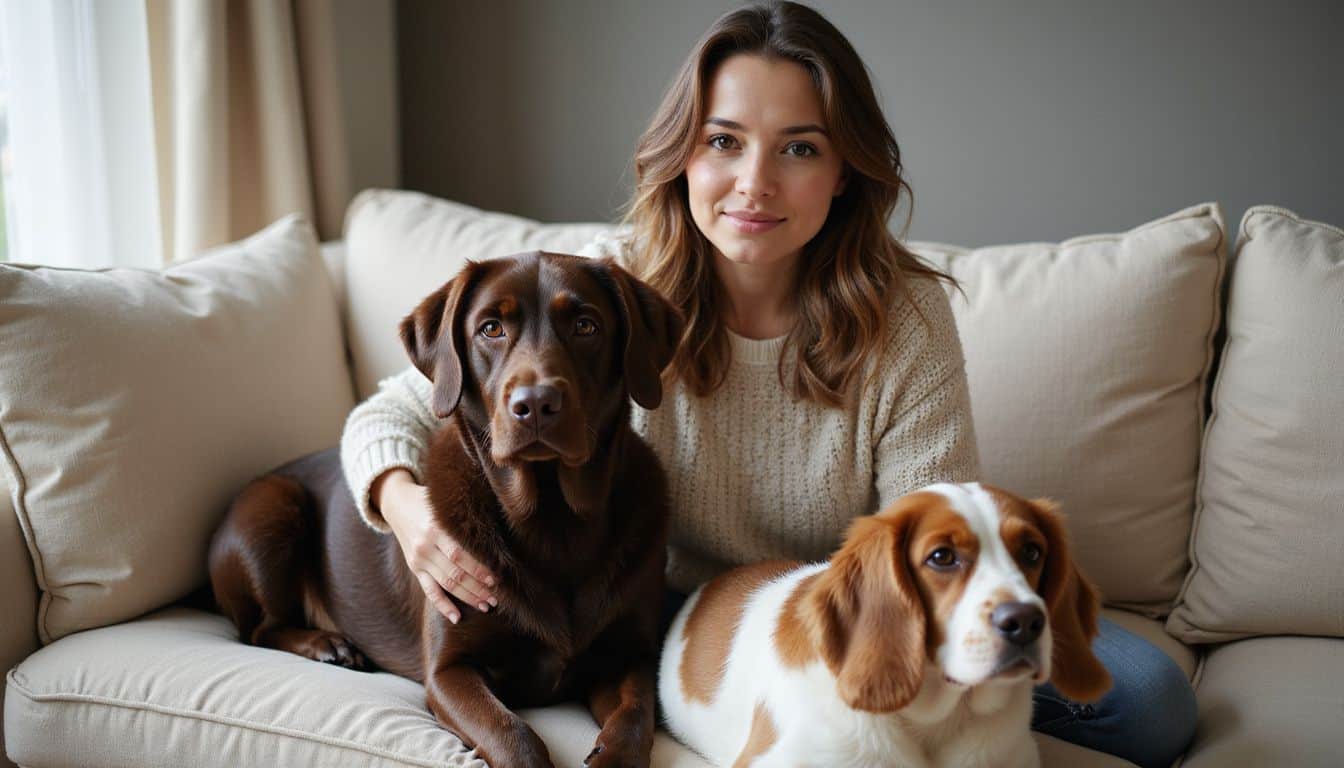
Dog trends change fast—and 2025 will offer some fresh options for first-time pet owners. Mixed breeds, like labradoodles and goldendoodles, will win new hearts because of their friendly personalities and minimal shedding.
Small dogs, including yorkshire terriers and pomeranians, will become favorites with apartment residents and busy professionals. Interest in rescue and shelter pets will also see a big boost, as many new owners choose adoption over breeders.
New online training programs and handy apps will help beginners manage energetic breeds, such as boxers and corgis, more easily.
Health-savvy dog owners will gravitate toward breeds with fewer inherited health problems. This trend puts poodles and poodle mixes near the top of the list. Busy women, juggling career and family, will prefer dogs that require minimal grooming.
Gentle-natured breeds—like cavalier king charles spaniels and bichon frises—will continue as popular choices. Certain large dogs, like the bernese mountain dog, may attract attention too, because of their calm personalities despite their bigger size.
Dogs are still better than people at adjusting to our lifestyles…so that ideal pup is definitely waiting out there!
People Also Ask
What are the best small dog breeds for first-time owners?
Pugs and Boston Terriers are ideal for new dog owners—they’re friendly, affectionate, and easy to train. Dachshunds also make great starter pets; they’re outgoing, playful, and compact enough for apartment life.
Are large dog breeds like Great Danes good for new dog owners?
Great Danes might be gentle and sweet-natured, but their large size means extra responsibilities. First-timers typically handle Bernese Mountain Dogs more easily, compared to Italian Mastiffs or Irish Wolfhounds. Big dogs usually need lots of room and consistent obedience routines.
How important is puppy training for first-time dog owners?
Puppy training is essential for anyone owning their first dog. It creates a close bond, teaches your pup commands, and helps avoid issues later. Training also keeps your pup calm, friendly, and happy at home.
Should first-time owners consider rescue dogs?
Rescue dogs often turn out to be fantastic pets for beginners. Many shelters carefully match dogs to your lifestyle and needs. Some rescues even arrive house-trained or familiar with simple commands—but they may still need extra love and patience while adapting to their new family.
Which breeds need the least grooming for busy first-time owners?
Whippets have short fur that’s easy to keep tidy. German Shepherds shed a bit more, requiring regular brushing, but they’re manageable. Dogs like Portuguese Water Dogs and Soft Coated Wheaten Terriers demand more grooming attention, while Saint Bernards need frequent brushing due to heavy coats.
References
https://www.thepioneerwoman.com/home-lifestyle/pets/g64460903/best-dog-breeds-for-first-time-owners/ (2025-04-15)
https://www.petzooie.com/articles/top-10-family-friendly-dog-breeds-for-first-time-owners (2025-02-27)
https://westsidevetcenter.com/owning-your-first-dog-a-comprehensive-guide-for-new-pet-owners/
https://unleashfido.com/15-best-dog-breeds-for-first-time-owners/
https://www.nylabone.com/dog101/10-best-first-time-dog-breeds
https://www.bellaandduke.com/dogs/expert-advice/dog-breeds/best-dog-breeds-for-first-time-owners/
https://www.vetstreet.com/our-pet-experts/the-best-dog-breeds-for-first-time-owners-our-readers-weigh-in (2016-03-18)
https://www.akc.org/dog-breeds/poodle-miniature/
https://www.dogster.com/lifestyle/are-greyhounds-good-for-first-time-dog-owners (2025-03-10)
https://yourpetandyou.elanco.com/us/new-pets/seven-best-dog-breeds-for-first-time-owners
https://www.akc.org/expert-advice/lifestyle/great-breeds-first-time-owners/
https://wagwalking.com/breed/top-worst-dog-breeds-for-first-time-pet-parents
https://www.dogster.com/dog-breeds/worst-dog-breeds-for-first-time-dog-owner
https://brightside.me/articles/8-dog-breeds-to-avoid-if-youre-a-first-time-owner-820550/
https://www.yahoo.com/lifestyle/experts-10-best-dogs-first-185000972.html
